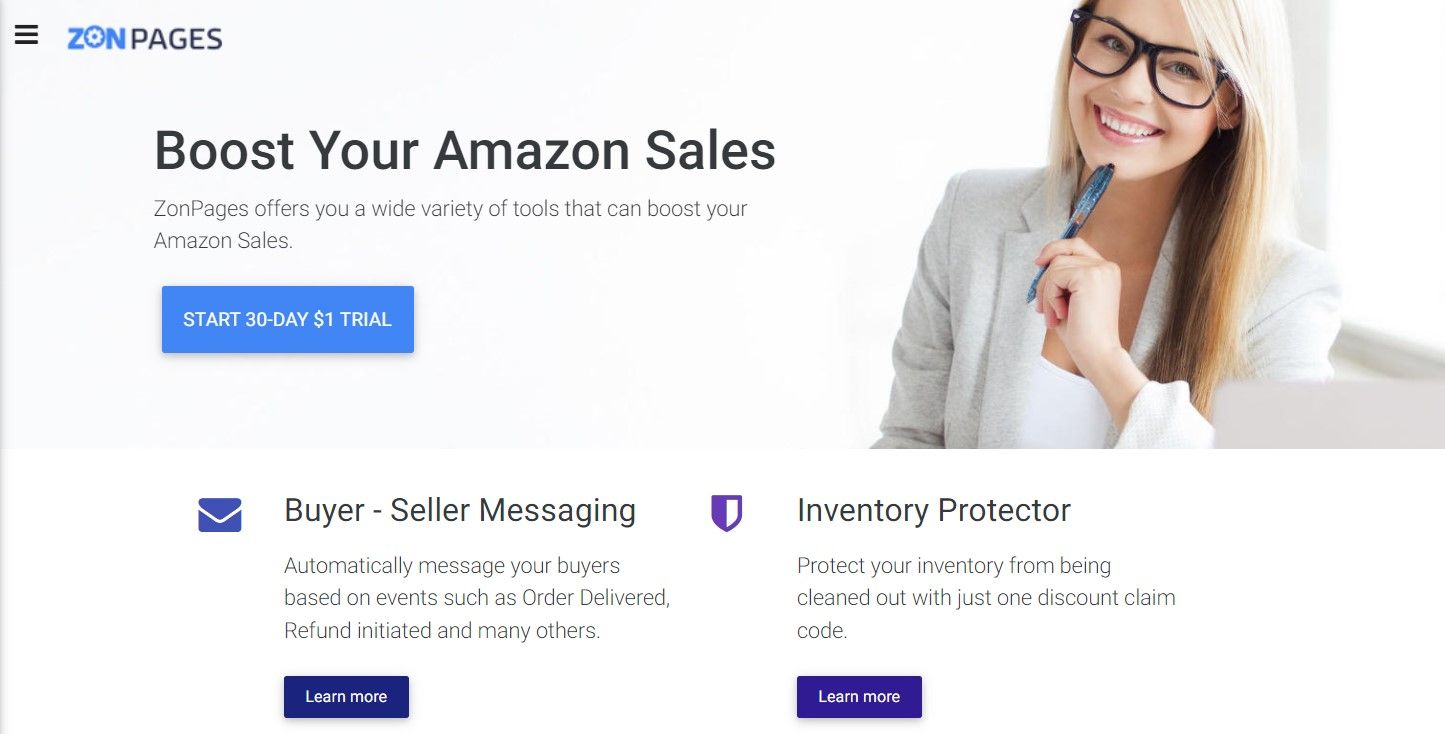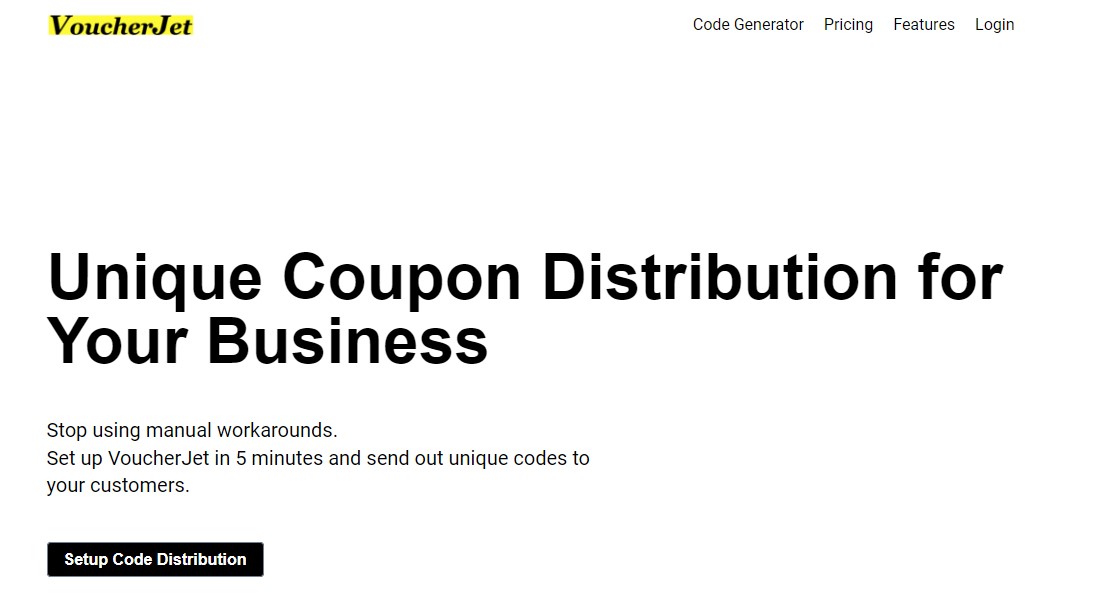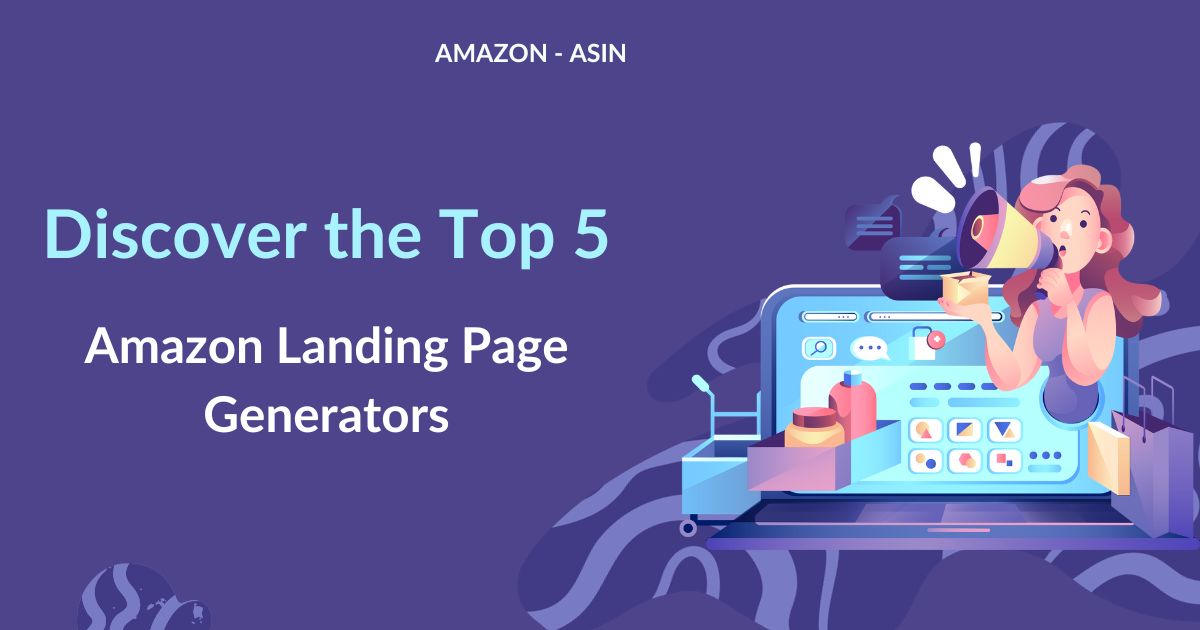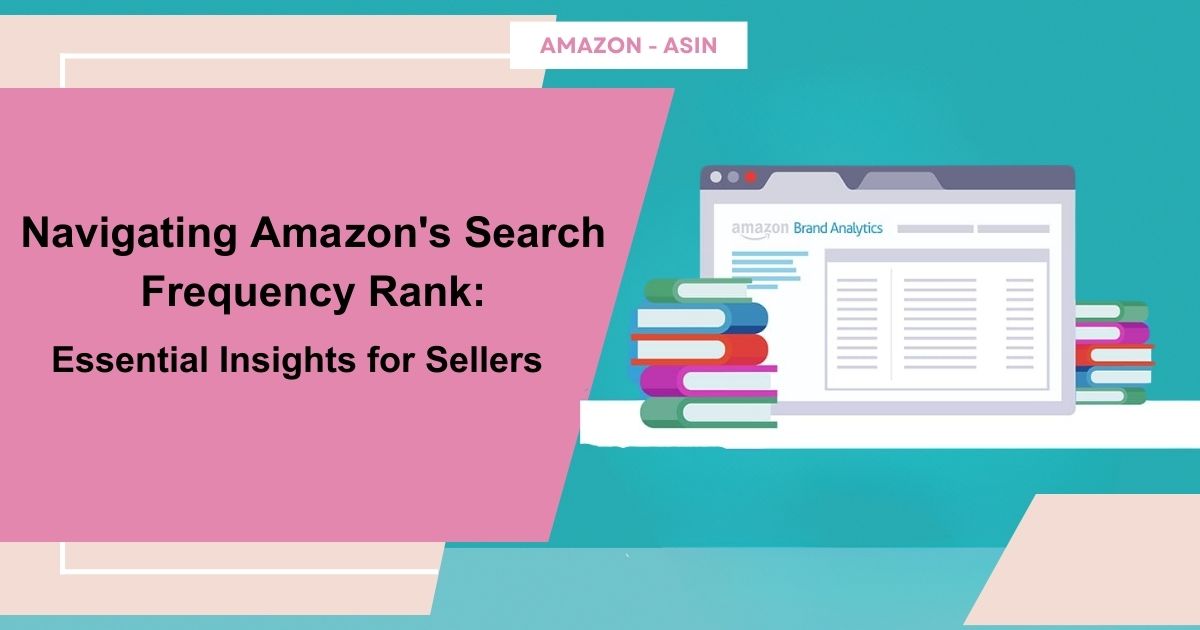In the ever-evolving world of e-commerce, Amazon has solidified its position as a global retail giant, providing both customers and sellers with an expansive marketplace to connect, buy, and sell products. For entrepreneurs and businesses looking to tap into this vast ecosystem, the Fulfillment by Amazon (FBA) program offers a streamlined and efficient way to reach a broader audience. However, succeeding on Amazon requires more than just listing your products. In a crowded marketplace, it’s essential to stand out and make a memorable impression. One of the tools at your disposal to achieve this is the Amazon landing page. This introduction will delve into what an Amazon landing page is, why it’s crucial for your FBA business, and how it differs from traditional product pages.
As an FBA seller, creating a compelling landing page can benefit your business. It not only helps you establish a stronger online presence but also allows you to tailor your brand’s message, present your products in the best light, and ultimately boost your sales.
Quick Guide:
- What is an Amazon landing page?
- What is the difference between a landing page and a product page?
- What are the guidelines for Amazon landing pages?
- How to Create High Converting Amazon Landing Page
- How do I create a landing page for Amazon affiliate marketing?
- Top 5 Amazon Landing Page Generators
What is an Amazon landing page?
An Amazon landing page is a dedicated and customized web page created specifically for a product or a group of products being sold on the Amazon platform. These landing pages are designed to enhance the shopping experience for customers and provide sellers with a unique space to showcase their products, brands, and promotional content.
Here are the key characteristics and features of Amazon landing pages:
Personalized Branding
Landing pages allow sellers to infuse their branding elements, such as logos created with an AI logo maker, images, and content, to create a more cohesive and memorable shopping experience.
Product Highlights
Sellers can highlight key product features, benefits, and unique selling points, making it easier for customers to understand the value of the product.
Rich Media
Landing pages support various types of rich media content, including images, videos, and interactive elements, enabling sellers to engage and inform potential customers effectively.
Call-to-Action (CTA)
These pages typically include clear and persuasive calls to action, such as “Add to Cart,” “Buy Now,” or other promotional offers to encourage customers to make a purchase.
Enhanced Content
Sellers can use landing pages to provide in-depth product information, such as user guides, tutorials, and additional resources to aid customers in making informed purchasing decisions.
Custom URLs
Amazon landing pages often have custom and memorable URLs that are easy to share and promote both on and off the Amazon platform.
Promotional Opportunities
Sellers can run promotions, discounts, and limited-time offers exclusively on their landing pages to incentivize customers.
Analytics
Landing pages typically come with tracking and analytics features, allowing sellers to monitor the performance of their pages and make data-driven adjustments.
It’s important to note that Amazon landing pages are separate from traditional Amazon product detail pages. While product detail pages provide essential product information and are shared among various sellers of the same product, landing pages are unique to individual sellers and offer a personalized space to market their products effectively.
Creating an Amazon landing page can be a valuable strategy for FBA (Fulfillment by Amazon) sellers looking to differentiate their products and build a brand presence on the platform. They serve as a powerful tool to engage customers, tell a compelling brand story, and drive conversions, ultimately helping sellers stand out in the competitive world of Amazon e-commerce.
Why You Need a Landing Page for Your Amazon Business
In the highly competitive and dynamic landscape of e-commerce, standing out on a platform as vast and influential as Amazon is no small feat. If you’re an FBA (Fulfillment by Amazon) seller, you already know that merely listing your products on the platform isn’t enough to thrive. This is where Amazon landing pages come into play, and understanding why you need them for your business can make a significant difference in your success. Here are several compelling reasons why you should consider incorporating Amazon landing pages into your strategy:
Brand Identity and Trust Building
Amazon landing pages allow you to establish and reinforce your brand’s identity. By creating a dedicated space for your products, you can build trust with customers, making them more likely to choose your offerings over competitors.
Enhanced Product Presentation
Landing pages provide the perfect canvas to showcase your products in the best light. You can use high-quality images, videos, and detailed descriptions to provide a comprehensive view of your products, which can result in higher conversion rates.
Improved Customer Engagement
Landing pages are an interactive and engaging way to present your products. You can include product demonstrations, customer reviews, and other elements that keep visitors engaged and informed.
Targeted Marketing and Promotions
With Amazon landing pages, you have more control over your marketing efforts. You can run promotions, offer exclusive discounts, and experiment with various marketing strategies to attract and retain customers.
Data and Analytics
Landing pages are equipped with tracking and analytics tools, enabling you to assess your page’s performance. Embracing this data-driven methodology empowers you to make well-informed choices and enhance your strategies for improved outcomes.
Drive External Traffic
Amazon landing pages can serve as a destination for external traffic sources, such as email marketing, social media, or pay-per-click advertising. This enables you to have more control over your marketing efforts outside of Amazon’s platform.
Custom URLs
Amazon landing pages often have custom, easy-to-remember URLs that can be shared with customers, making it simpler to promote your products, both on and off Amazon.
Product Launches and Campaigns
Landing pages are ideal for launching new products or running specific marketing campaigns. They provide a focused platform to introduce and promote these offerings.
Competitive Advantage
Many Amazon sellers are not utilizing landing pages to their full potential. By incorporating them into your strategy, you can gain a competitive advantage, differentiating your brand and products from the competition.
Long-Term Brand Building
Building a brand presence on Amazon is essential for long-term success. Amazon landing pages are a valuable tool for establishing and nurturing that brand, fostering customer loyalty and repeat business.
What is the difference between a landing page and a product page?
To truly harness the potential of Amazon as an FBA seller, it’s essential to understand the key differences between landing pages and product pages. Here’s a detailed comparison of these two types of pages:
Product Page:
- Standardized Format: Product pages on Amazon follow a standardized format where essential product information is presented, such as the product title, product description, Price, images, and customer reviews.
- Shared Among Sellers: Product pages are shared among all sellers offering the same product. This means you’ll be competing with other sellers on the same page for the Buy Box and customer attention.
- Limited Brand Customization: While you can add your brand logo and some product images, the customization options for product pages are limited, making it challenging to differentiate your brand.
- Focus on Product Details: Product pages are primarily focused on presenting specific product details, such as dimensions, specifications, and features, to help customers make a purchasing decision.
Landing Page:
- Dedicated and Customizable: Landing pages are dedicated to your brand and products, allowing you to fully customize the design, content, and layout. This customization can help create a unique and memorable shopping experience.
- Exclusive to You: Landing pages are unique to individual sellers, meaning you have full control over the content and promotions without competing with other sellers on the same page.
- Brand Story and Messaging: Landing pages provide a platform to tell your brand story, convey your value proposition, and establish trust and credibility with customers.
- Rich Media and Engagement: You can incorporate rich media, such as videos and interactive elements, to engage and inform customers more effectively.
- Marketing and Promotions: Landing pages are ideal for running marketing campaigns, offering exclusive discounts, and promoting your products in a way that’s not possible on product pages.
When to use each type of page in your Amazon FBA business:
The decision to use a product page or a landing page in your Amazon FBA business depends on your specific goals and strategies. Here’s when to use each type of page:
Product Pages:
- Standard Product Listings: Use product pages for standard product listings where your focus is on providing accurate product information, attracting organic search traffic, and competing for Buy Box with other sellers.
- Commoditized Products: When selling common or commoditized products, product pages are suitable because customers typically make purchasing decisions based on price and specifications.
Landing Pages:
- Brand Differentiation: Use landing pages when you want to differentiate your brand from competitors, tell a unique brand story, and build a strong brand presence on Amazon.
- Marketing Campaigns: Landing pages are perfect for running marketing campaigns, launching new products, and offering exclusive promotions to drive external traffic and boost conversions.
- Engaging and Informing: When you have complex or high-value products that require more in-depth information or when you want to engage and inform customers with rich media and a personalized experience.
- Exclusive Promotions: Utilize landing pages for exclusive promotions, discounts, and limited-time offers to incentivize customers and drive conversions.
What are the guidelines for Amazon landing pages?
Here are some key guidelines and requirements to consider:
Accurate and Compliant Content
Ensure that all content on your landing page is accurate, truthful, and compliant with Amazon’s policies. This includes product descriptions, pricing, and claims about your products.
No Misleading Information
Do not include any information that might mislead customers. This includes false claims, deceptive statements, or any content that could lead to a misunderstanding about your products.
Respect Intellectual Property Rights
Ensure that you have the right to use any copyrighted materials, such as images or videos, on your landing page. Respect intellectual property rights, including trademarks and copyrights.
Compliance with Amazon’s Brand Guidelines
Adhere to Amazon’s brand guidelines when using their logo, icons, and other brand elements. You can typically find these guidelines on Amazon Seller Central.
Transparency in Product Promotion
Disclose any promotions, discounts, or special offers on your landing page. Amazon encourages transparency in pricing and promotions.
Privacy and Data Security
If you collect customer information on your landing page, you must adhere to privacy and data security laws. Ensure that you have a privacy policy in place and use secure data handling practices.
Mobile Responsiveness
Ensure that your landing page is mobile-responsive, as many customers access Amazon via mobile devices.
Fast Loading Times
Landing pages should load quickly to provide a smooth and efficient customer experience. Slow-loading pages can negatively impact user satisfaction.
Accessibility
Make your landing page accessible to all users, including those with disabilities. Ensure that your content is perceivable and navigable for everyone.
Avoid External Links
Amazon typically discourages external links on landing pages. While they may be allowed in some cases, it’s best to check Amazon’s policies for the most up-to-date information.
Importance of compliance with Amazon’s policies
Compliance with Amazon’s policies is of paramount importance for Amazon FBA sellers using landing pages for several reasons:
Account Health
Non-compliance with Amazon’s policies can result in account health issues, including warnings, suspensions, or even account closures. Maintaining a clean account health record is vital for your business’s long-term success on the platform.
Customer Trust
Adhering to Amazon’s guidelines helps build and maintain customer trust. Customers expect transparency, accuracy, and honesty when shopping on Amazon. Violating policies can erode trust and harm your brand’s reputation.
Legal Consequences
Violating Amazon’s policies can also lead to legal consequences, including potential lawsuits or legal actions. It’s essential to operate within the boundaries of the law and Amazon’s terms of service.
Protecting Your Brand
Complying with Amazon’s policies protects your brand’s integrity. Misleading or deceptive practices can tarnish your brand and make it difficult to recover your reputation.
Sustainable Business
Running a sustainable and long-lasting Amazon FBA business requires compliance with policies. Avoiding policy violations ensures you can continue selling on Amazon and growing your business.
Positive Customer Experience
Amazon’s policies are designed to create a positive and consistent shopping experience for customers. Compliance contributes to a better shopping environment and happier customers, which can lead to repeat business.
How to Create High Converting Landing Page
Creating a high-converting Amazon landing page is a strategic process that involves optimizing your page for maximum user engagement and conversion rates. Here’s a step-by-step guide to help you create a landing page that drives results:
Set Clear Objectives
Before you start, define your objectives. Are you looking to boost sales, gather leads, or increase brand awareness? Knowing your goals will guide your landing page design and content.
Understand Your Target Audience
Know your target customer’s preferences, pain points, and needs. Tailor your landing page to speak directly to your audience, using language and visuals that resonate with them.
Compelling Headline
Craft a clear and attention-grabbing headline that highlights the main benefit or solution your product offers. Make it concise and compelling.
Engaging Visuals
Use high-quality pictures and videos of your product being used and seen from various perspectives. Visual content should be engaging and help customers visualize the product in their lives.
Informative Product Description
Write a detailed product description that highlights key features, benefits, and unique selling points. Use compelling words to encourage customers to take action.
Trust Signals
Include trust-building elements such as customer reviews and testimonials, trust badges, and security icons. These instill confidence in your brand and product.
Clear Call-to-Action (CTA)
Place a clear and prominent CTA button that tells visitors what action to take, whether it’s “Add to Cart,” “Buy Now,” or “Learn More.” Make it stand out with contrasting colors.
Scannable Content
Organize your content for easy scanning. Use bullet points, subheadings, and short paragraphs to make it easier for visitors to find the information they need.
Mobile Optimization
Ensure your landing page is responsive and looks great on mobile devices. Many customers access Amazon on smartphones and tablets.
Load Time Optimization
Speed matters. Optimize your landing page for quick loading to prevent users from bouncing due to slow page speed.
How do I create a landing page for Amazon affiliate marketing?
Creating a landing page for Amazon affiliate marketing involves crafting a dedicated web page that promotes Amazon products through your affiliate links. The aim is to prompt visitors to engage by clicking your affiliate links and making purchases on Amazon, earning you a commission. Here’s a step-by-step guide to help you create an effective Amazon affiliate marketing landing page:
Select a Niche or Product Category
Select a niche or product category that resonates with your interest and knowledge. It’s crucial to opt for a niche that genuinely excites you and where you possess some expertise, as this will facilitate the creation of engaging content.
Keyword Research
Perform keyword research to discover commonly searched terms and subject matters associated with your selected niche.
Domain and Hosting
Secure a domain name that not only mirrors your specific field but is also simple to recall. You’ll also need web hosting to host your landing page. Many hosting providers offer easy website-building tools.
Website Platform
Choose a website platform or content management system (CMS) to build your landing page. Popular options include WordPress, Wix, and Squarespace. These platforms offer templates and tools for creating web pages.
Website Design
Select a clean and user-friendly website design that complements your niche. Ensure that your landing page design is responsive, mobile-friendly, and visually appealing.
Content Creation
Create high-quality, informative, and engaging content related to your chosen niche. This content can include product reviews, comparisons, buying guides, and informative articles. Make certain your content is organized effectively by incorporating headings, subheadings, and images. Furthermore, the content should also be readable and clear so that readers do not get confused. In this scenario, a paraphraser tool can be helpful to ensure these qualities. A paraphrase tool will automatically swap words and alter sentence structures based on writing tone to improve quality.
Affiliate Links Integration
Sign up for the Amazon Associates program (Amazon’s affiliate marketing program) and generate links to products you wish to endorse as part of an affiliate program. Integrate these affiliate links naturally within your content, ensuring they blend seamlessly with your articles.
Opt-In Forms (Optional)
Consider adding opt-in forms to capture visitor email addresses for future marketing efforts. Offering a free eBook, newsletter, or other valuable content in exchange for email subscriptions can help you build a list of potential customers.
SEO Optimization
Improve your landing page’s search engine performance by incorporating appropriate keywords and crafting meta descriptions for your content. These actions will enhance your page’s visibility in search engine results.
Quality and Consistency
Consistently create and update your content to keep it fresh and valuable for your audience. Regular updates can also improve your SEO rankings.
Promotion
Promote your landing page through various channels, such as social media, email marketing, and online forums. Building backlinks from reputable websites can also improve your page’s authority.
Analytics
Utilize analytics tools like Google Analytics to track visitor behavior on your landing page. Analyze the data to understand what’s working and what needs improvement.
Compliance with Amazon’s Policies
Ensure that your affiliate marketing activities, including your landing page, comply with Amazon’s policies and guidelines. Violations can lead to account suspension or termination.
Disclosure
It’s essential to provide full disclosure to your visitors that your landing page contains affiliate links, and you may earn commissions from purchases. Transparency builds trust with your audience.
Optimize for Conversions
Continually analyze your landing page’s performance and make improvements to increase the click-through rate and conversion rate of your affiliate links.
Top 5 Amazon Landing Page Generators
LandingCube

LandingCube is a comprehensive Amazon landing page generator designed to help FBA sellers create high-converting landing pages for their products. It provides a range of features to drive traffic, boost sales, and increase the effectiveness of Amazon promotions.
Pricing:
LandingCube offers several pricing plans, including a free plan with limited features. The paid plans start at around $19 per month and go up based on the number of features and landing pages you need, making it accessible to businesses of various sizes.
ZonPages

ZonPages is another popular Amazon landing page generator and marketing automation tool designed to help Amazon FBA sellers increase their sales and drive customer engagement.
Pricing:
ZonPages offers several pricing tiers, including a free trial. Paid plans start at around $49 per month and increase in cost depending on the features and level of automation you require. The pricing varies based on the number of emails sent and landing pages created.
My Seller Pal

My Seller Pal is a tool that provides various features and services for Amazon sellers, but it might not be solely a landing page generator. It’s more of an all-in-one platform to assist Amazon sellers with different aspects of their business, such as analytics, inventory management, and PPC (Pay-Per-Click) advertising. However, it may include landing page creation features, although I don’t have specific details.
Pricing:
The pricing for My Seller Pal can also vary depending on the specific services and features you need. Paid plans are $20/Month + $0.09 per Amazon order and a free trial for 30 days. It’s recommended to visit their official website to find the most current pricing information and details on their offerings.
Landing Page Promoter

Landing Page Promoter is a tool designed to help Amazon sellers create customized landing pages for their products. It offers various features for building and promoting landing pages, including the ability to add rich media like images and videos, customizable templates, and analytics to track page performance.
Price:
Pricing for Landing Page Promoters may vary based on the features and usage level. They typically offer a free trial, and the pricing details Starter plan is $25/month, Essential $49/month. Be sure to check their website for the most current pricing information.
Voucherjet

Voucherjet can assist in redirecting your website’s organic traffic from external sources to your Amazon product listings via dedicated landing pages. It facilitates engagement with your customer base through automated emails, allowing you to provide enticing product discounts to both new and returning customers and encouraging organic product reviews. Voucherjet integrates seamlessly with various social media platforms, including Facebook, Instagram, Pinterest, and more.
Pricing:
Voucherjet offers a “seller” package, providing access to their fundamental features, priced at just under $25 per month.
Conclusion
In the Amazon FBA domain, a skillfully designed landing page can serve as a valuable asset for increasing sales and establishing an enduring brand presence. By gaining insight into your target audience, setting specific objectives, and adhering to recommended design and content standards, you can develop an effective landing page that not only captivates visitors but also enhances conversion rates. It’s crucial to ensure compliance with Amazon’s guidelines, optimize for mobile users, and regularly monitor your page’s performance to continuously fine-tune your approach. By dedicating yourself to providing a compelling shopping experience and cultivating trust with customers, your Amazon landing page can evolve into a potent tool for achieving success in the realm of e-commerce.




